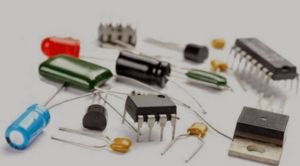Whether kids or adults, we all live in a world of electrical components. Yet, we need to sort out the proper set of electrical components. The process of selecting appropriate components is not complex but rather strategic.
This market is huge, and you will find many components. They all have unique specifications, qualities, and intended applications. That’s why it is necessary to understand the basic principles behind choosing components. Welcome to the world of electronics.
The Core of Electrical Components
Electrical parts are components that make up all the circuits, electronics, and power systems. Performance and safety are generally associated with specific ratings and characteristics. So, when you design a PCB or electrical circuits, you must have basic knowledge. In this case, you should pay attention to specifications and core components.
Electrical specifications
Almost all the electrical components have some standard specifications. Here are some of those to consider for your electrical design:
Voltage Rating
Every component has an upper voltage rating limit, which is the safe mark. Exceeding this mark can lead to component failure or even fire hazards. It’s measured in Volts (V). All components must rate at least the highest operating voltage of your system.
Current Rating
Each component can carry a certain amount of current. Beyond that mark, it overheats or becomes damaged. It’s measured in Amperes (A). Resistors, circuit breakers, and fuses all have fixed current indexes. Therefore, selecting components that can effectively support the specific circuits’ highest current levels is mandatory.
Power Rating
This indicates the amount of power a component can use without damage. It’s measured in Watts (W). Power ratings are essential for resistors, capacitors, and inductors.
Frequency Response
This applies to AC circuits. Some components might vary depending on the frequency of the signal. Capacitors or inductors vary with frequency because of their impedance.
Basics of Electrical Components and What They Do
Any electrical design consists of some standard electrical components. They have their unique features and functions.
| Component Name | How Does It Work? |
| PCB | PCB creates channels and pathways for the electricity and signals to follow. Without a PCB, a device is nothing but a body. |
| Transistor | A transistor’s job is to amplify or switch electrical signals and power. It is a three-terminal device. The terminals are- base, collector, and emitter. It revolutionized the electrical designs. |
| Diode | Diodes make electrical signals unidirectional, convert AC to DC, and protect components from reverse voltage. They can be Zener, standard, or light-emitting diodes (LEDs). |
| Packages | Packages protect the semiconductor chip from environmental factors like moisture, dust, and temperature variations. |
| Resistor | Resistors permit controlled current flow inside a circuit and protect it in case of excess flow. There are three types of resistors: Fixed, variable, and special. Some special resistors include thermistors and light-dependent resistors. |
| Varistor | A varistor or voltage-dependent resistor protects a circuit from high-voltage surges. It keeps the voltage at a safe level and prevents damage to the circuit. |
| Capacitor | A capacitor gives us electrical energy as an electric field. It helps us filter, smooth, and timing functions in circuits. It stabilizes voltage and filters out noise in a signal. Some of its types are ceramic, electrolytic, and tantalum. |
| Switch | Switches open or close a circuit, controlling the current flow and turning the device on and off. |
| Battery | A battery is a source of electrical energy from chemical energy. It supplies power for a portable electrical device and gives emergency backup. |
| Others | Other components include sensors, integrated circuits (ICs), thyristors, etc. |
Identification of electrical components
Electrical components build up any electrical or electronic circuit. If you can identify which components do what can help you design, build, and troubleshoot electrical devices. Electrical components usually come in various shapes, sizes, and types. Also, they are not the same. They have a unique purpose in a circuit. You can quickly identify them by observing the characteristics, markings, and symbols.
Transistors
Transistors can be small and cylindrical or large and have three leads. Their labels specify the type of transistor, such as NPN or PNP. NPN transistors have an arrow pointing out of the emitter, while PNP transistors have an arrow pointing at the emitter.
Diodes
Diodes are often small, cylindrical components. They have a black body and a stripe at one end to mark the cathode (negative side). Diodes, like LEDs, are transparent and may emit light. They have a triangle pointing toward a line. It marks the direction in which current flows or emits light.
Resistors
Resistors are small, cylindrical, or rectangular components. A standard resistor uses 4 or 5 color bands. They state its resistance value, tolerance, and sometimes temperature coefficient. A resistor symbol is a zig-zag line or a rectangle with a numerical value next to it.
Capacitors
Capacitors have various shapes and sizes. Electrolytic capacitors are cylindrical. Their one end with a negative (-) sign indicates polarity. Ceramic capacitors are small, disc-shaped components. They have a three-digit code, which means their capacitance. A capacitor’s symbol is two parallel lines. A polarized capacitor has a curved line in it. The lines are straight for non-polarized ones.
Switches
Switches come in different forms, such as toggle, push-button, rotary, and slide types. Push-button switches have a small button that allows the user to open or close the circuit by pressing it. Toggle switches contain a small lever to change between on and off conditions.
Batteries
Batteries have a variety of shapes, including cylindrical and coin-shaped. The battery’s type (like Li-ion, NiMH), voltage (for example, 1.5V, 3.7V), and sometimes its capacity (in mAh or Ah) are on it. Rechargeable batteries contain symbols that state rechargeability, like a recycling symbol. Common symbols of battery are two parallel lines. One is a plus (+) and the other a minus (−) sign indicating polarity.
Fundamentals of Opting for Electrical Components for Your Electrical Design
It is wise not to go for a fancy component right away. With so much media available for advertisements, it’s hard to restrain. Before choosing any element for your setup, be careful with the following aspects-
Know your requirements
The component should serve the proper purpose for your electrical design. Power circuits need high-power components, whereas analog signal processing needs low-noise components. Your favorite gaming PC would have different specifications than your office desktop.
Temperature sensitivity
Temperature is an essential issue in electrical design. Heated components cause disturbance in the working environment. You can use high-temperature rated resistors or capacitors in your components. PCBs, made up of FR-4, can tolerate temperatures up to 130-140 degrees Celsius. Ceramic PCBs can handle temperatures of more than 350 degrees. So, choose your components that can tolerate temperatures enough for your electrical design.
Reliability and longevity
Always ensure your chosen electrical components can serve you for a long time. In this case, trusted brands often offer a service period for any element. You can bet on them. Authentic components with a smooth design can endure technical fluctuations. They do not degrade quickly. Hence, you can get an intelligent service from genuine components.
Cost vs. Performance
Cut your coat according to your clothes. Expensive components are not always better performers. Is the component readily available nearby? Rare or custom parts are hard to find, so when you need replacement, it’s troublesome to find the spare parts.
Efficiency and power loss
Efficiency is one of the critical things you must consider. Based on the efficiency rate, you can generally negotiate on power consumption. Effective components can save you a lot of money. You can also follow other power optimization tricks and tips to prolong your battery life. Always look for ways to reduce unwanted power consumption components.
Electrical Components Datasets
Always follow the usual specs when picking out parts. Look at the accuracy number, voltage, and current. Like other materials in the market, electronic components also follow international standards. IEC, ECSS, and ISO are the three most used standards worldwide.
Choose a Reliable Manufacturer
You might be working on DIY projects or want to do batch production. In both cases, you must do it in a suitable facility. You can find the necessary parts online and in local stores if you do it yourself. They are all available everywhere.
When you opt for a reliable manufacturer, UETPCB can be your trusted partner. This company is a top manufacturer of PCBs and electronic devices. Here, you can get all-in-one solutions, from production to assembly services.
Electrical Vs Electronic Devices: What’s the Difference?
Have you ever wondered whether electrical and electronic devices are the same? Well, they are not, at least not for the experts. We get other forms of electrical energy from electrical devices. Like heat, light, and sound energy. For example, large, heavy devices like transformers, motors, and generators.
However, electronic devices control the flow of electrons and perform particular tasks. Examples include small and light devices like transistors and integrated circuits. In this article, electrical components are described as electronic device components.
Summary
Nothing is more peaceful than having electrical components that operate smoothly. Your electrical design must perform well for a long time, so you should not compromise on quality. You should also be aware of the ins and outs of the electrical components. We tried to shed some light on them to help you choose better.
If you still have more questions, you can contact us anytime. We hope you can create a perfect electrical design.




